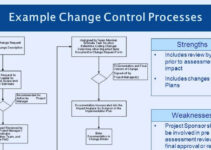Organizational change is the method and process of changing or altering the behavior, people, processes, technology, and structure of the company. It is significant to mention here that cultural change is different from the other types of change as just described in the first sentence. Today, we’ll discuss managing change in organizational behavior and; the best strategies for dealing with change in organizational behavior.
Best Strategies for Managing Change in Organizational Behavior
Let’s discuss the best strategies for managing change in organizational behavior; they’re as follows;
Socializing
If you are launching a new system, process, or technology that is interesting, then you should share it with employees and workers. You can do so by employing the latest communication tools and equipment to spread the change news both inside and outside the company.
Rewards & Incentives
According to an estimate, 77% of the workers and team members say that they would work hard if they received recognition, rewards, and incentives. Attaching rewards and incentives is a great motivation force to quickly bring them on board the change program. It means the company should reward team members and workers for the successful execution of the new behaviors in the change program.
Information Accessibility
Documenting everything means hiding information from workers and team members. It means that you should develop a centralized system that contains all the documented information and the details of the change projects. According to an estimate, 2.5 hours of employees’ time is spent on finding the required and relevant information. A centralized system and information accessibility would make things easier for employees and save a lot of time.
Sharing Knowledge
Some employees and workers would accept and adapt to the changes faster; if the knowledge-sharing system among team members and workers is faster and speedy. Employee coordination and collaboration tools and equipment like Haiilo would help companies quickly and easily share information with employees.
Empowering Team Members
Empowering team members and workers would help companies to motivate their workforce to participate in the change program. It means that they have the freedom and decision-making autonomy to share new ideas and concepts. Without empowering workers, their participation rate in the change project would drop significantly.
Right Communication Tool
Employees and team members should employ the right, safe, and secure communication tool, rather than instant messaging or emails. It is because the unread rate of emails is very high. According to an estimate, 29% of the workers say that the change initiatives fail due to the poor internal communication medium. Choosing the right communication medium would define the success of your change project.
Leadership Onboard
Top leadership should be on board with the change program, and it amplifies the success rate of the project. Companies should share the benefits of leadership involvement in the change program; and provide them ROI (return on investment) of the change project. Once they’re aware of the significance of their involvement in the change project; the likelihood of their involvement would increase.
Listening to Employees
While promoting the communication and participation rate of employees, you should openly listen to their feedback and concerns about the change project and how they feel about it. You should permit them to ask questions about the change program; and share their thoughts and ideas for bringing improvement in the change project.
Open Communication
The open communication line is the key to the success of the change project and building healthy professional relationships with workers, employees, and team members. The management should start two-way communication with employees; and inquire them how they feel about the change program.
Training Programs
Companies should conduct training programs to upgrade the skill set of employees and workers and give them sufficient time and resources to follow new behavior. It means giving employees assurance and support about the change project. Reassurance and empathic attitude would increase the participation rate of employees in the change program.
Open & Transparent
According to an estimate, 30% of the team members and workers say that their management and leadership are not always honest and truthful about the changes. Management should be transparent and honest about the change program for the successful execution of the changes. If employees don’t feel comfortable about the changes, then you should be honest and open about the change to build a trusting relationship with them.
Goals & Objectives
The change project goals and objectives should be clear; they should follow the SMART (specific, measurable, achievable, relevant, time-bound) principle. It is difficult to set clear and SMART goals and objectives; it allows them to give the right direction to the workers and employees.
Prioritizing People
It is significant to give priority to the people involved in the change program. The change project could easily fail if people don’t comprehend their role or believe in the project. The company’s management and leadership should proactively engage in the change project, communicate with employees, and create a desire about the change program in the workplace.
Conclusion: Managing Change in Organizational Behavior
After an in-depth study of managing change in organizational behavior; we have realized that change management in organizational behavior is highly significant. If you are learning about dealing with change in organizational behavior; then you should keep in mind the abovementioned strategies and practices.
Ahsan is an accomplished researcher and has a deep insight in worldly life affairs. He goes Live 3 days a week on various social media platforms. Other than research writing, he’s a very interesting person.


